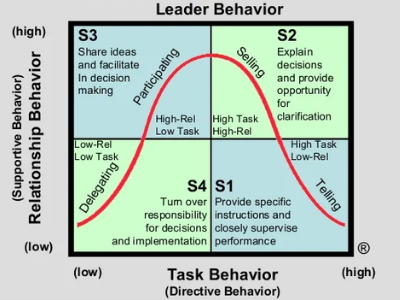
Improving two-way communications
By Damien Edmonds – 5 minute read.
When you come together as a team post-pandemic, leaders have to really make it count.
- Leaders remain responsible for ensuring staff accountability, however professional teams aren’t coming together as often face-to-face.
- But when compared to 1971, Australians are now 15x more likely to have a Bachelor’s degree or higher (ie. highly knowledgeable workers).
- Two-way communication can help leaders steer teams more effectively, and convert individual information into collective knowledge.
- If you’re looking to develop staff engagement levels, then team facilitated workshops are extremely valuable.
The changing profile of Australian higher-education students over the past 50 years tells a fascinating story. In 2011 (18.8%), Australia’s population aged 15 years and above with a Bachelor’s degree or higher was over nine times the figure for 1971 (2%). In 2021, this figure rose to 31% (see ‘attainment by level’).
This current level of education means Australian team leaders don’t necessarily know more (technically) than the people they lead. Which begs the question: what are the best ways for leaders to steer their people but hold them accountable and, above all, bring out the best in them, without a top-down approach?
I learnt several tips and tricks when I was working in London as a sessional lecturer in marketing research with mature-age students. That time of my life was a surprisingly educational experience and kindled in me a desire to understand how different people learn. It was actually the role that led me to a career in professional facilitation.
1. Two-way communications
My lectures involved delivering course material to 50-100 students. Considering less than 15% of average population are confident to speak up in a public meeting, it’s fair my delivery of information was one-way for most of the lectures. Admittedly, some students were confident asking questions, which then involved whole-of-hall discussions to occur.

Encouraging questions from your audience.
On the other hand, our tutorials involved smaller groups of 10-20 students and were held in classrooms (also face-to-face at that time). Participants were able to form opinions, listen to others, and share their own experiences. This enabled two-way dialogue to occur and provided the opportunity for deeper discussion over our 13-week course.
It was the power of group-communication from the tutorials that helped participants really develop their own personal capacities. Participation within smaller groups allowed participants to understand how to contribute to the group, as well as their inter-personal style within it. And because they were engaged, our students displayed better commitment and attendance.
As course-leader, I saw how lecturing could build a student’s broad-understanding (ie. basic information exchange) but realised that smaller group sessions were a more effective way to communicate – especially when it came to developing buy-in.
Through two-way discussion, participants were able to learn topic-content (ie. training) AND also better able to articulate, discuss and present this information to others.
2. The value of the relationship-driven approach to leading
When nudging human behaviour, one of the basic tenets of leadership is clear communication. And one of the most relevant communication theories involves Hersey-Blanchard’s Situational Leadership model.

Originally a framework used to diagnose an employee’s developmental level, the Situational Leadership model is also proving relevant for explaining WHY and HOW relationship-based leadership works.
This model helps leaders work out which style will be most effective in which context and today. Because our workforce is now more highly-educated, most often the most effective style will not be to delegate and lead task behaviour, but to engage in relationship-driven leadership instead.
Depending on who you’re managing and when, a leader’s behaviour is either:
- Task-focused: Leading through directive behaviour involves either:
- Delegating style of communication (empowering and monitoring – Style 4), or
- Directing style of communication (guiding and telling – Style 1).
- Relationship-focused: Leading through supportive behaviour involves either:
- Coaching style of communication (selling and explaining – Style 2), or
- Supporting style of communication (participating and facilitating – Style 3).
3. Educate your team in a group setting, rather than as individuals
Consider a sporting coach who specialises in offensive-forward or defence-back strategies. Business teams are groups, much like sporting teams. But whilst sporting teams train regularly together to compete, a lot of businesses train their people separately. They typically use ‘just-in-time’ training to develop individual skills, relying on leaders to then bring everyone together.
Team workshops at work, however, can be effective in the same way as sports-coaching for a particular goal. They enable opinions to be articulated, discussions to be had, and strategies to be developed as a team. Team facilitated workshops enable professional teams to come together to bring about the change they want – determining issues and finding solutions with their team.
In most business settings today, relationships are paramount to communicating information effectively and also motivating those you are leading.
Conclusion
Moving forwards, I see an increasing trend for more collaborative discussions within business. Why? Because effective leaders are looking for ways to better engage with their teams.
We know that on-the-job learning is important for educated, yet individualised, knowledge-workers. And also that leaders today don’t have all the answers. In fact, during change, leaders simply can’t communicate enough.
A group setting with two-way discussion allows leaders and their teams to convert individual information into collective knowledge, resulting to improved relationships on the job.
If you’re looking to develop staff engagement levels, then team facilitated workshops are extremely valuable.
Images from Shutterstock.
*Sessional lecturing experience includes: London School of Marketing 2005-2008, University of Westminster 2008, and Griffith University 2010-2012.
More:
Blog: Six reasons why you should use an independent facilitator

